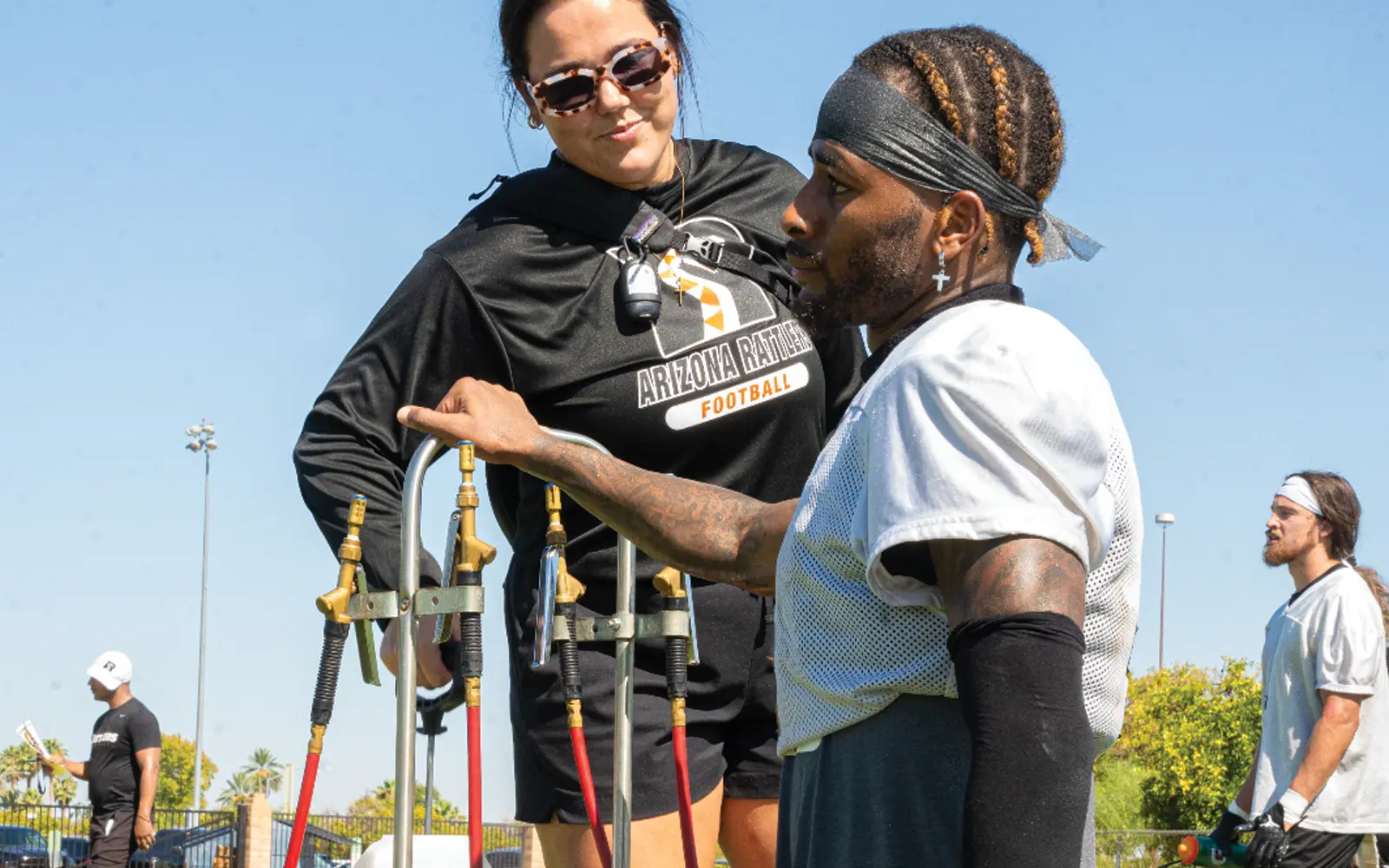By: Gabbie Miller, MS, ATC
It goes without saying that summers in Phoenix are HOT. Our ability to be active outside- whether that be for a hike, an outdoor workout, a practice, or a game is impacted by this heat as we head into the later summer months and into our still-warm fall. With temps often well over 100 degrees Fahrenheit, it is important to keep ourselves and our athletes healthy and safe.
On the range of heat illnesses, heat exhaustion is one step before heat stroke. There are a couple of different types of heat illnesses, but the real emergency is heat stroke. If the signs and symptoms of heat exhaustion are not quickly identified and treated, serious complications can occur to our athletes.
Symptoms for Heat Exhaustion
- Core body temperature of 96.8 to 105
- Fatigue
- Weakness
- Pale
- Heavy sweating
- Chills
- Dizziness
- Lightheaded
- Nausea or vomiting
- Decreased blood pressure
- Headache
- Irritability
- Muscle cramps, spasms, or twitches
- Loss of coordination
- Disorientation
- Changes in personality
With all of these symptoms, it is vital to know yourself or your athlete and understand what is “normal.” A change in personality is one of the largest signs of heat exhaustion leading into heat stroke, so not knowing “normal” can be dangerous.
Staying in the game or continuing a workout is important to athletes and coaches, however, if an athlete is not pulled and treated for symptoms of heat exhaustion, their core body temperature will continue to rise. Once it surpasses 105, they will experience heat stroke, which impacts the central nervous system. They can experience loss of muscle function, confusion, loss of consciousness, poor balance, organ failure, and even death if they are not cooled down promptly.
Treating Heat Exhaustion
If an athlete is showing symptoms for heat exhaustion, they should be moved to a cool or sharded area, rehydrate with cool water or a sports drink, elevate legs, and utilize cooling devices. Cooling devices could range from cold towels, ice packs or bags, or cold water or ice bath immersions. If a full immersion is not accessible, focus the cold towel or ice packs on the neck, armpits, and groin.
Preventing Heat Exhaustion
Staying hydrated before, during, and after practices and games is vital. Hydration is not just water intake. Athletes lose salt through their sweat, so they need to replenish electrolytes as well.
Read “Hydrate…or Die-Drate” to learn more about the ins and outs of hydration and electrolytes.
If the weather is too hot, athletes should dress in light colored clothing to reflect light and not absorb as much heat. Also, if the athlete has a sports medicine team, get to know them and ask any questions about heat exhaustion prevention.
Athletes may be at a higher risk for heat exhaustion if they have a higher BMI, a history of heat illness, sickle cell disease, fighting off a sickness, or on a medication that predisposes the athlete to heat illness. If you or your athlete is on a competitive team, be sure to communicate with the athletic trainer about any risk factors or concerns.
Don’t forget that if an Athletic Trainer is on site, they will help coaches and athletes mitigate the risk for heat illness. Athletic trainers work tirelessly to make sure athletes are protected against heat exhaustion. They spend every practice and game with their athletes, so they know them, what their normal is, and what could potentially put them at risk for heat exhaustion. They push water and electrolytes so players can stay hydrated. Athletic trainers also educate athletes and coaches on how to properly prepare for a full practice.

